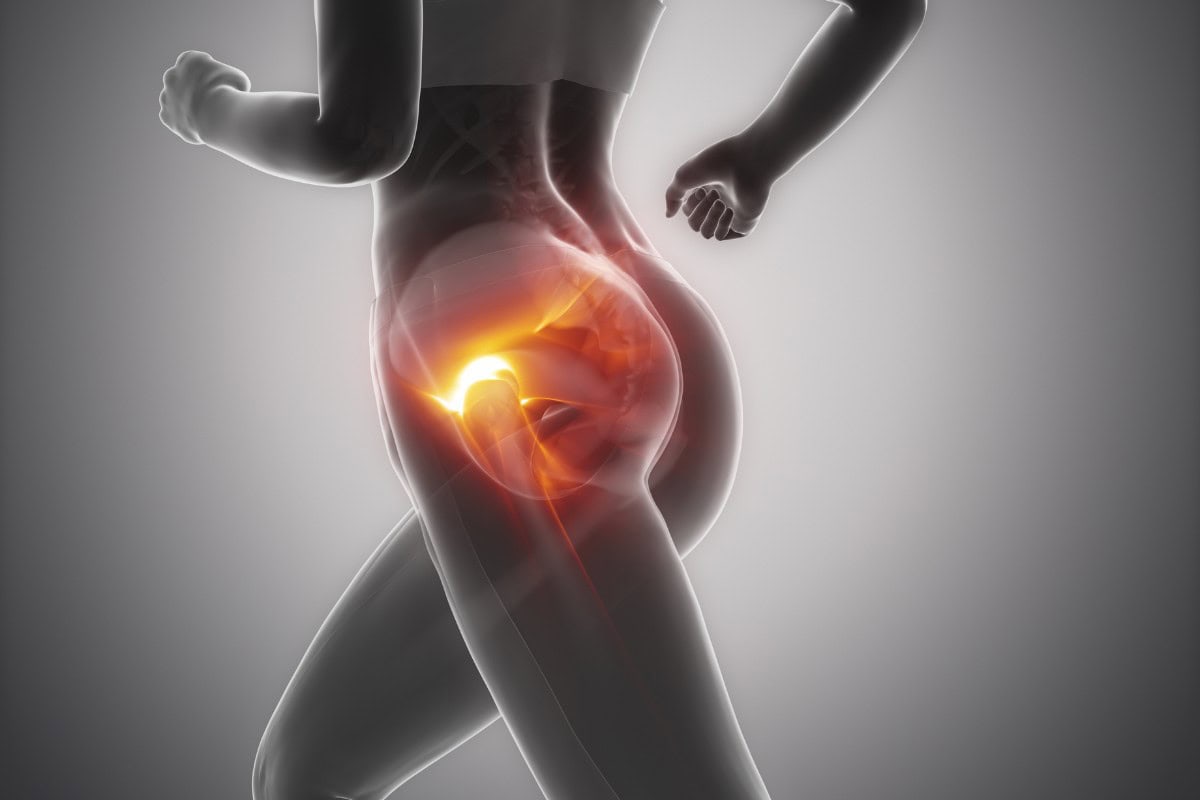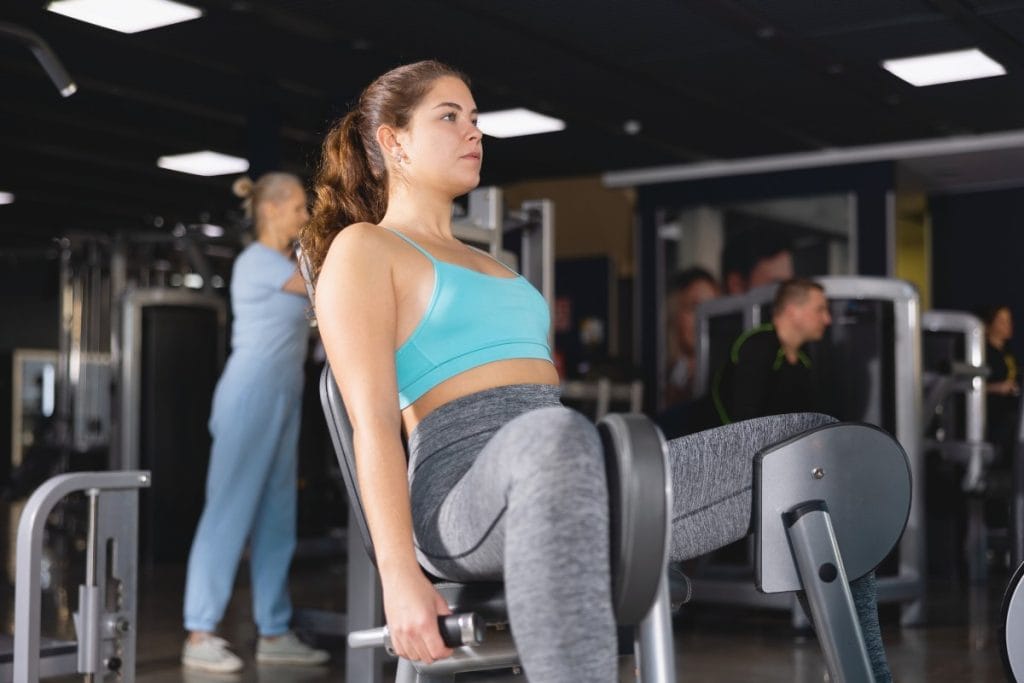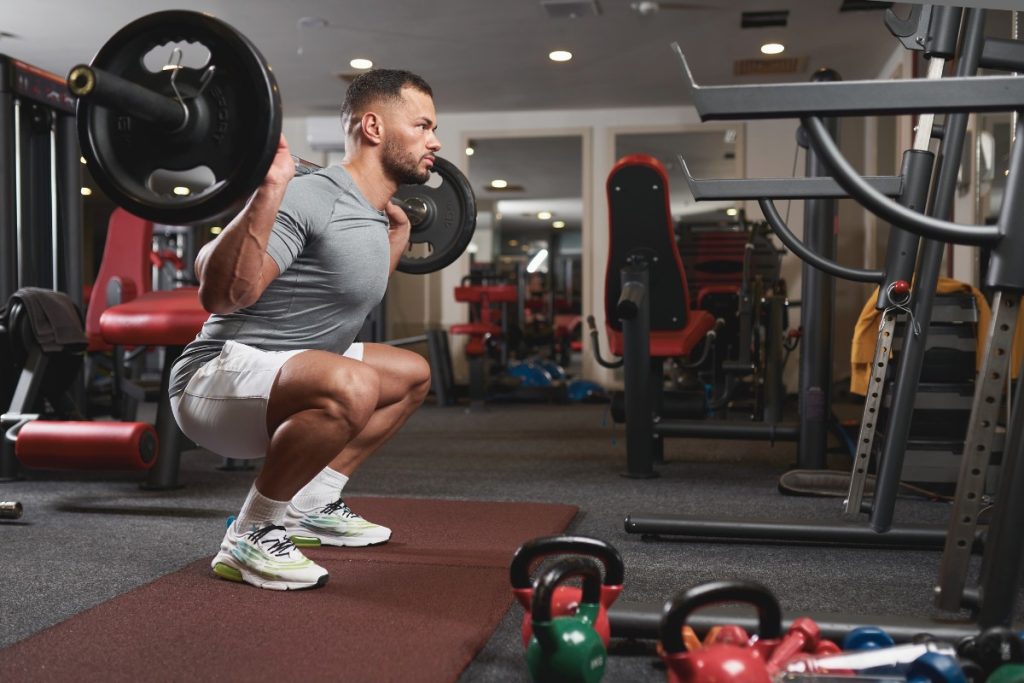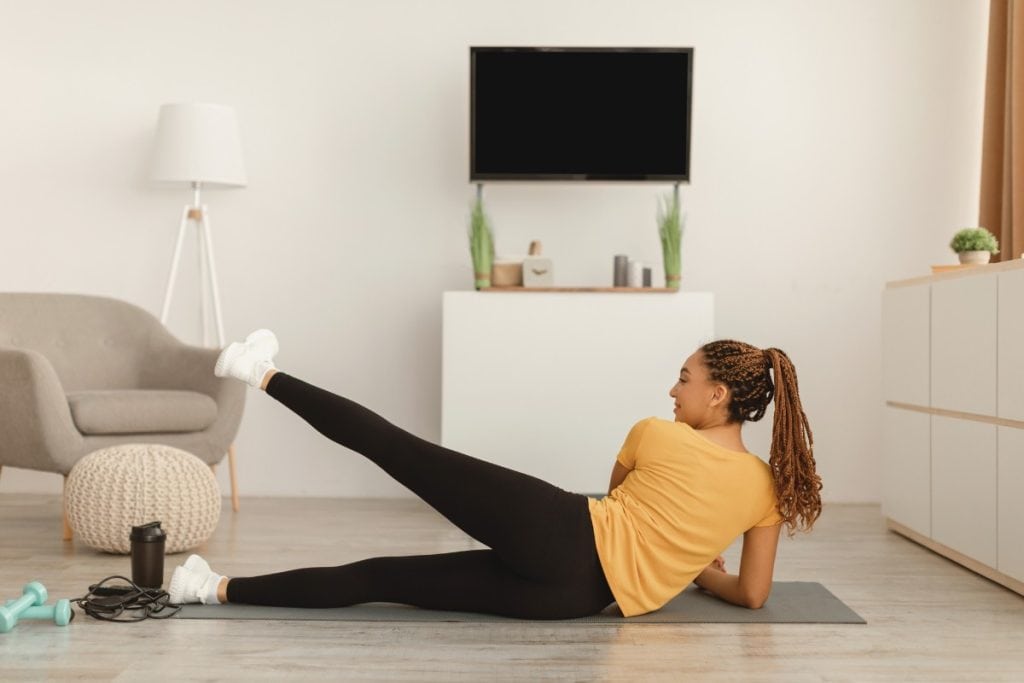Imagine the frustration of feeling unstable every time you walk or stand on one leg. These seemingly simple movements rely on a group of muscles known as the hip abductors. The hip abductors, crucial yet often overlooked, play a pivotal role in stabilising our gait.
Delving into the anatomy, the hip abductors consist of muscles like the gluteus medius, gluteus minimus, and tensor fasciae latae. Weakness in these muscles can lead to a plethora of issues, including hip pain and compromised balance. To fully appreciate their function and the problems associated with their deficiencies, it’s essential to understand their anatomy and the clinical signs pointing to their underperformance.
In the subsequent article, we will walk you through the biomechanics of hip abduction, the symptoms of weakened hip abductors, and, most importantly, provide a comprehensive guide to strengthening these vital players in our musculoskeletal system. Whether you are a seasoned athlete or just embarking on your fitness journey, troubleshooting and bolstering your hip abductor muscles can lead to profound improvements in your overall movement health.

Understanding Hip Abduction
Hip abduction refers to the outward movement of the leg away from the body’s midline. This motion is not only fundamental for performing daily tasks—such as sidestepping to avoid a puddle or gracefully exiting a vehicle—but it’s also integral to various athletic endeavours. When we walk, run, or balance on one leg, it’s our hip abductor muscles that are hard at work, providing lateral stability to the pelvis and lower limb.
Exercises geared toward strengthening the hip abductor muscles can be vital in preserving joint integrity and mitigating the discomfort often associated with hip and knee pain. By introducing movements such as side-lying leg lifts, clamshells, or using a hip abduction machine, individuals can develop stronger, more resilient muscles in this region.
“The combination of quadriceps exercise and hip abductor exercise is effective on pain reduction in knee osteoarthritis patients.”
Metasari, D., Sukartini, T., & Qona’ah, A. (2023). Effect of Combinations of Quadriceps Exercise and Hip Abductor Exercise on Pain in Knee Osteoarthritis Patients in Orthopedic and Traumatology Outpatient Care. Indonesian Journal of Medicine.
Additionally, it’s crucial to emphasise that the combination of hip abduction and adduction exercises can greatly enhance an individual’s overall stability. By focusing on various groups of muscles throughout the thigh and hip, one can ensure a balanced development that supports functional movement. Attaining strong hip abductors is not just about achieving physical balance; it’s also about reducing the risk of injury and ensuring efficiency in our daily movements.
The Role of Hip Abductors in Movement
The hip abductors, primarily composed of the gluteus medius, gluteus minimus, and tensor fasciae latae, are pivotal players in the realm of functional movement. These muscles facilitate the capacity to stand comfortably, walk with a steady rhythm, and rotate the legs – all without conscious effort. The leg’s abduction, or its movement away from the midline, is indispensable in performing a plethora of actions ranging from the basic act of walking to stepping to the side or alighting a bed or vehicle.

Additionally, the hip abductors are essential for the stabilization of the pelvis during weight-bearing activities. When running or engaging in high-impact sports, it is the hip abductors that regulate the alignment of the pelvis and femur (thighbone), directly contributing to the control and precision of our leg movements.
Strengthening these muscles not only enhances the balance between the knee extensors and flexors but also augments overall balance, thus optimising movement efficiency and reducing the likelihood of injury.
Common issues related to weak hip abductors
Weakness in the hip abductor muscles can manifest in several orthopaedic complaints. For instance, a common consequence of underdeveloped hip abductors is knee valgus, a condition characterised by the inward collapsing of the knee. This poses a heightened risk of knee injuries, particularly evident during dynamic movements like walking or squatting.
Such weakness also has a pronounced link to the development of iliotibial band syndrome, where individuals experience stabbing pain on the outside of the knee. Moreover, insufficient hip abductor strength can escalate the chances of sustaining ankle injuries, a particular concern amongst runners and other athletes involved in rapid direction change sports.
A further implication of weak hip abductors involves the inevitable overcompensation by other muscle groups. The hip flexors, for example, may be subjected to excessive strain as they pick up the slack, thus paving the way for potential injuries.
Clinical research underscores the relationship between weak hip abductors and issues such as IT band syndrome and patellofemoral pain, highlighting the imperative need for targeted strengthening in these muscles to promote lower body health and functionality.
Hip Abductor Muscles
Positioned on the lateral aspect of our hips, the hip abductor muscles are akin to the body’s own natural steadying force. They consist of the gluteus medius, gluteus minimus, and tensor fasciae latae, and are the main muscles responsible for moving the leg sideways away from the body—critical for maintaining balance and stability. A fortification of these muscles through targeted exercises can significantly improve pelvic stability, core strength, and joint health, while also warding off hip pain and injuries.
“The performance of the hip abductor strength can be influenced by core stability in standing and core stability exercise can be recommended in individuals with insufficient core stability to improve the hip abductionor performance in standing.”
Jeon, I. (2022). The Effectiveness of External Support on Hip Abduction Strength in Subjects with Insufficient Core Stability. Journal of Musculoskeletal Science and Technology.
Whether you’re an avid runner, an occasional gym-goer, or simply pursuing a life less interrupted by discomfort, incorporating hip abduction exercises into your routine is pivotal. Moves such as side leg lifts and clamshells transcend age or fitness level, offering benefits that include bolstered physical function and alleviated pain.
Gluteus Medius
The gluteus medius, located in the upper lateral region of the buttock, plays an indispensable role in our gait. This muscle ensures that we walk with a fluid, natural stride, and provides stability with each step.
Working out the gluteus medius not only betters our stability during ambulation but also contributes to a more aesthetically pleasing contour of the buttocks. The firming and lifting impact it can impart makes it a key target for exercises in strengthening routines, especially for those intent on addressing saddlebags or enhancing muscle definition.
When we neglect the health of our gluteus medius, we may find ourselves battling pain and instability as we age – it’s a muscle that demands our attention for continued mobility. By focusing on exercises that specifically engage the gluteus medius, one can set a foundation for building resistance against common injuries.
Gluteus Minimus
Functioning alongside its fellow gluteal muscles, the gluteus minimus lies directly beneath the gluteus medius and is an integral part of the buttocks. Its role in stabilising the pelvic system cannot be understated – it acts as a bastion for core muscle activation. A strong gluteus minimus can be the key to not only preventing low back pain but also enhancing one’s ability to handle weightier loads during physical activity.
Including exercises that move through the frontal plane engages and sharpens the gluteus minimus. It’s this very engagement that ensures efficient and balanced movement patterns, fortifying one’s capability to maintain equilibrium while walking or engaging in any activity demanding unilateral support. A neglected gluteus minimus can become the crucible for discomfort and malfunction in movement, underscoring the necessity of its conditioning.
Tensor Fasciae Latae
The tensor fasciae latae, often neglected in discussions of the hip muscles, plays a unique yet important role in hip joint internal rotation and assisting knee flexion. It is also instrumental in stabilising the hip during abduction movements. This muscle maintains the alignment of one leg in front of the other during the act of walking and is critical for pelvis stabilisation when we stand upright.
An under-appreciated yet crucial player in maintaining a steady and proper gait cycle, the tensor fasciae latae, through targeted training, can contribute to a well-rounded and injury-resistant lower body. Engaging this muscle through specific exercises can further reinforce balance and aid in the smooth function of the hip and knee joints.
Assessing Hip Abductor Strength
Strong hip abductors are instrumental for effective physical function and overall stability. Targeted exercises can significantly enhance hip abductor strength, leading to improved performance and injury prevention.
For individuals who lead sedentary lifestyles or engage in regular physical activity, such as running, it is essential to ensure that these muscles are robust enough to prevent compensatory movements that could result in lower back and knee problems.
In the realm of clinical research, there’s compelling evidence that points to the positive impact of hip abductor strength on knee osteoarthritis, as well as in the reduction of knee pain and the improvement of running performance. It is a critical element to consider in an overall fitness or rehabilitation program.
Clinical Tests for Hip Abductor Strength
Determining the strength of hip abductor muscles can be accomplished through specific clinical tests. For instance, a common assessment involves the single-leg squat off a step. If, during this exercise, the hip of the non-supported leg tends to drop, it may indicate a weakness in the hip abductors.

Another way to identify potential weakness is during a squat test; if the knees splay outwards at the squat’s lowest point, this suggests the hip adductors may be overpowering the abductors. The clamshell exercise, focusing predominately on the gluteus medius, serves as both a test and a reinforcement exercise.
Engaging in single-leg exercises that necessitate core stability can reveal the integrity of hip abductors, as these muscles are essential for lower-body movements and overall balance.
Common Signs of Weak Hip Abductors
Indications of weak hip abductors are not limited to the gym or sports arena; they can present in everyday movements, leading to potential pain or injuries in the hips and pelvic area.
A tangible sign of weakness is an evident difficulty in maintaining hip alignment when performing a single-leg squat off a step, often leading to the non-supported hip dropping and a compensatory leaning motion to maintain balance.
Furthermore, during the execution of a squat, knees that drift outwardly at the lowest point may signal an imbalance in strength, favouring the adductors over the abductors. Such muscle discrepancies can trigger other muscles to compensate, resulting in imbalances that extend to the lower back and knees. Addressing this by strengthening the hip abductors will not only support a full range of motion but also play a pivotal role in mitigating the risk of conditions like osteoarthritis and enhancing athletic abilities such as sprinting and running efficiency.
Strengthening Hip Abductors
Strengthening hip abductors is an important facet of maintaining balance, stability, and alignment in the lower body. Their role in pelvic support and reducing the risk of injury makes them a focal point in many fitness and rehabilitation regimens.
The gluteus maximus, medius, and minimus along with the tensor fasciae latae comprise the primary hip abductor muscles. By targeting these muscles, individuals can enhance their capacity to lift heavier weights, which in turn contributes to better back support.
Strong hip abductors are also essential in correcting and maintaining proper pelvic alignment, which is fundamental to various movements including walking and running. Notably, hip abductor strength is integral to knee stability during weight-bearing exercises and can assist in the management of conditions such as knee osteoarthritis, providing a non-pharmaceutical option for pain relief.
The Starting Position and Form for Hip Abduction Exercises
Proper form and starting position are paramount in hip abduction exercises to avoid strain and maximise effectiveness. When setting up for standing hip abductions, it is essential to stand with a straight back and with feet pointing forward. This initial position ensures core engagement and spinal alignment. The exercise entails moving the leg laterally, away from the body’s midline, until there is tension felt along the outer hip and thigh.
Care must be taken to avoid leaning excessively in any direction, which could offload the target muscle group.
Similarly, for side-lying hip abductions, proper form calls for laying on one side with legs aligned and toes pointed forward. The upper leg is lifted in a controlled manner without rotating the hip or spine to keep the focus on the hip abductor muscles.
Effective Hip Abductor Exercises
Hip abduction exercises play a critical role in developing the strength and resilience of the gluteal muscles. Incorporating movements such as clamshells, side-lying leg raises, and standing hip abductions can bolster the integrity of these muscles.

Using a hip abduction machine allows for resistance adjustment and the incorporation of multiple leg muscle groups, boosting overall balance and leg strength. It’s crucial to maintain proper posture throughout these movements to prevent back strain, which could lead to severe injuries like disc prolapse.
Strong glutes, nurtured through consistent hip abductor exercises, are pivotal not only for leg movements but also for supporting the lower back and maintaining knee joint integrity during lifting and other functional tasks.
Tips for Progressing Hip Abductor Exercises
Advancement of hip abductor exercises should be approached strategically to ensure consistent progression without risking injury. This can be achieved by gradually increasing resistance, by utilising equipment such as resistance bands or adding weight with dumbbells. To continue challenging the muscles, individuals can increase the number of repetitions or add more sets to their routines
Diversity in exercise selection is key to continuous improvement; incorporating lateral movements such as side lunges enhances the engagement of hip abductors from a variety of angles, promoting comprehensive muscle development.
Throughout the progression of these exercises, form and posture should remain a priority – maintaining alignment and core engagement is essential for reaping the full benefits of hip abductor training while keeping the risk of injury at bay.